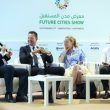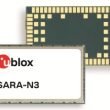

Telecom, media and tech investment and consolidation activity in Africa is predicted to reach a record high for 2019. According to reports from specialist news provider, TMT Finance this comes as a number of significant deals are scheduled, including the opening up of Ethiopia’s telecom sector. (more…)
February 11, 2019
Posted by: Anasia D'mello

Guavus, a Thales company and specialist in Artificial Intelligence (AI)-based analytics, has acquired SQLstream. SQLstream is a real-time streaming analytics company based in San Francisco, CA. Terms of the deal have not been disclosed. (more…)
January 28, 2019
Posted by: Anasia D'mello

A new study from Juniper Research has found that users of mobile ticketing will total 1.9 billion by 2023, up from 1.1 billion in 2019. In comparison, the total number of digital ticketing users across mobile, online and wearable channels, will reach 2.2 billion by 2023. (more…)
January 22, 2019
Posted by: Anasia D'mello

Hewlett Packard Enterprise (HPE) announced it has opened a new IoT Innovation Lab in Geneva, Switzerland, to help customers capitalise on the vast amounts of data generated outside of data centres by devices, machines, assets and sensors at the edge. (more…)
January 18, 2019
Posted by: Anasia D'mello

Nordic Automation Systems announces adding the cellular IoT, including NB-IoT (LTE CAT NB1) and LTE-M (LTE Cat-M1) technologies, to their product range. NB-IoT and LTE-M both allow low-power wide-area communication between battery operating sensors and a core network. (more…)
Posted by: Anasia D'mello

Oracle has released Java Card 3.1, the latest version of the popular and open application platform used to secure some of the world’s most sensitive devices. (more…)
January 16, 2019
Posted by: Anasia D'mello

Future Cities Show will feature disruptive innovations as it holds its third edition on April 8-10, 2019 at the Dubai World Trade Centre. Under the theme “Propelling Globalisation through Digital Transformation”, FCS will gather together startup companies to showcase their projects to an international roster of investors. (more…)
January 14, 2019
Posted by: Anasia D'mello

It’s all very well to have a flow of data from IoT-enabled sensors and devices, but if you don’t have the necessary tools to monetise the data you may as well not bother. (more…)
December 20, 2018
Posted by: Anasia D'mello

Qualcomm Technologies, Inc. a subsidiary of Qualcomm Incorporated, announced its next-generation modem purpose-built for Internet of Things (IoT) applications such as asset trackers, health monitors, security systems, smart city sensors and smart meters, as well as a range of wearable trackers. (more…)
December 17, 2018
Posted by: Anasia D'mello

u-blox, a global provider of positioning and wireless communication technologies, announced the SARA-N3, a multi-band NB-IoT module that supports a preliminary set of 3GPP Release 14 features (LTE Cat NB2). (more…)
November 28, 2018
Posted by: Anasia D'mello